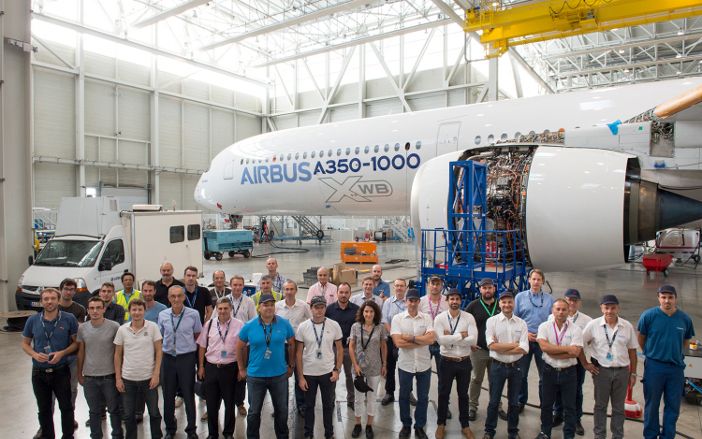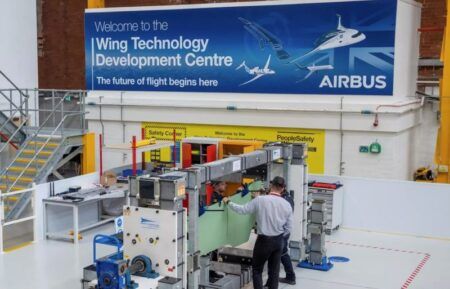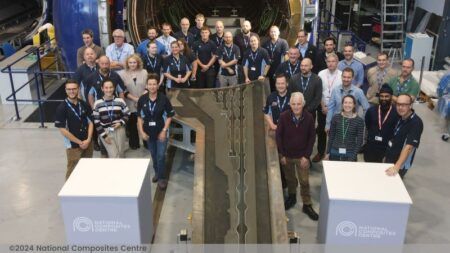An optimized method for the ground vibration testing of Airbus jetliners has reduced this validation phase for the A350 XWB’s stretched-fuselage A350-1000 version, and will now be used for the next new wide-body aircraft: the A330neo (New Engine Option).
Ground vibration testing is performed to measure the aircraft’s dynamic behavior, confirming theoretical models of various flight conditions, such as maneuvering, flying in gusty conditions and during landing touchdowns. In addition to being part of the “go” decision for a new jetliner taking to the skies for the first time, the test data helps clear an aircraft’s flight domain and is required for type certification by airworthiness authorities.
As the A350-1000 is a derivative of the A350-900 (which underwent a ground vibration test program for its own type certification, issued last November), a multifunctional Airbus Commercial Aircraft team was set up to shorten and simplify the process.
The A350-1000’s testing was performed over a two-day period, compared to nine days for the A350-900, and the more than one month required for previous Airbus jetliners. “We brought together people from different domains,” explained Nicolas Lastère, a flight physics engineer in the Loads and Aeroelastics department at Airbus Commercial Aircraft. “The feedback and our results are a clear demonstration that different functions can work well together.”
Based on the streamlined ground vibration testing’s success for the A350-1000, the method will now also be used for the A330neo – which is scheduled to perform its initial take-off in the first half of 2017.
Edited by Michael Jones
February 15, 2017





